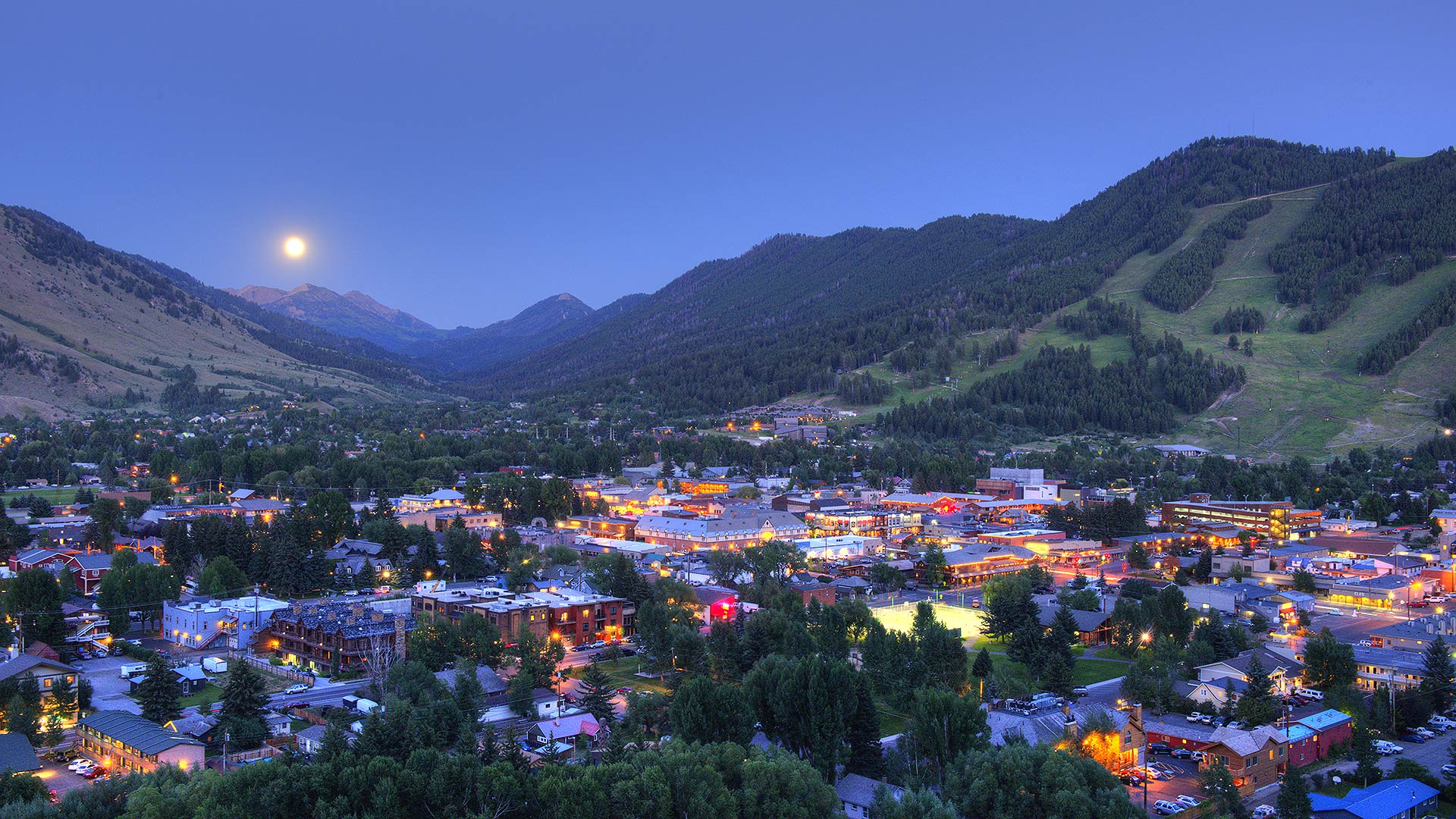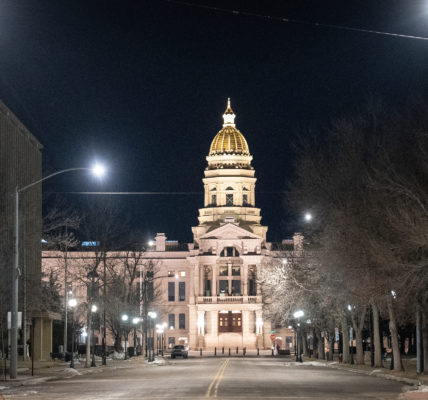Politicians want affordable housing on public lands. So does the Bridger-Teton.

• Using federal land for affordable housing continues to gain momentum.
By Billy Arnold
Jackson Hole News&Guide
Via- Wyoming News Exchange
JACKSON — Eli Bebout leaned forward, crossed his arms and asked a question that public servants have been asking for at least a year, and likely longer: Could Teton County’s housing crisis be solved with federal land?
“There’s places in the valley where you don’t want to build. I get that,” Bebout said. “But there’s also places where you could put in a really nice subdivision, and areas where people could do a land swap.”
Bebout, the only person in Wyoming history to have served as both the speaker of the house and president of the senate, asked the question at a May meeting where state officials were attempting to find a way to use deregulation to solve Wyoming’s statewide housing issues. In doing so, he tapped into a decades-old fight over how to use public lands. Conservationists argue those federal lands belong to everyone and can’t be carved up for private uses or sold off to states.
But Bebout’s question wasn’t exactly fringe.
After the COVID-19 pandemic drove the cost of living in the Mountain West sky high, momentum has grown to build affordable housing on public lands. Some pressure has come from conservative lawmakers like Bebout. But local officials and national forests are asking similar questions.
In Teton County, a land swap may not even be necessary to build affordable housing on public land. The Bridger-Teton National Forest is already considering doing so.
Forest managers are eyeing development at the Nelson Drive Trailhead that could benefit both their employees and others. Who ultimately lives there will depend on who partners with the forest. Whether it gets built will depend on whether the forest and its partner, the Jackson Hole Community Housing Trust, can fund the work.
“I really want to be part of the greater solution when it comes to housing — and look beyond our needs,” Chad Hudson, the supervisor for the Bridger-Teton National Forest, told the News&Guide in June.
In 2012, the Bridger-Teton decided to sell 10 acres of land along North Cache Street. The goal was to use money from the sale to remodel administrative offices and develop an additional 13 multi-family housing units at Nelson and an additional four units at the Cottonwood Work Center off Fall Creek Road. The bulk of that money, however, was spent on redeveloping the administrative offices, Hudson said. Development at Nelson has not yet happened.
Two other things have, however, happened in the last decade.
First, the Bridger-Teton’s housing situation has deteriorated as the broader housing crisis in Teton County deepened.
Second, federal politicians and local housing developers have made a number of moves that increase the odds that housing at Nelson, a Bridger-Teton administrative site, may not just be for forest workers.
About 15 years ago, the Bridger-Teton was considering moving its headquarters to Pinedale or Afton, an attempt to avoid the high cost of living in Jackson Hole. Ultimately, officials decided to stay in response to community feedback and a belief that forest headquarters should be close to the heart of the Greater Yellowstone Ecosystem.
But in the intervening decade-and-a-half, the Bridger-Teton has made little progress on addressing its housing shortages, Hudson said.
Between administrative staff in the supervisors office and staff in the Jackson Ranger District, there are between 80 and 100 permanent forest employees in the Jackson area. The Bridger-Teton, however, is only able to house about 20 of those workers.
On a government salary, the rest are responsible for finding housing in a community where the average price of a single family home just topped $7 million, and two-bedroom rentals start at $3,000 a month.
Older employees that bought into the local real estate market when things were more affordable are retiring. Younger prospects are struggling to find a place to live.
About 60% of the forest’s housing is filled with emergency responders, like firefighters. The forest is now facing a number of vacancies, including the recreation supervisor position that Linda Merigliano held for decades.
Merigliano, still working for the forest, is coordinating forest planning while also doing elements of her old job. Administrative staff in the supervisor’s office are also being given permission to work remotely from places like Pinedale, where they can find more affordable homes. That’s slowly upending the decision to keep administrative headquarters in Jackson.
“We have not made a conscious decision to move to Pinedale or Afton,” Hudson said. “But position by position, we are slowly migrating that direction due to the lack of housing.”
Meanwhile, changes at the federal level have allowed some communities to move toward carving up national forests for affordable housing. The 2018 Farm Bill gave the U.S. Forest Service authority to lease its lands to local municipalities to build affordable housing.
In Summit County, Colorado, a liberal, outdoors community in a purple state, the town of Dillon inked a deal in 2023 to build affordable housing on the White River National Forest — the first city in the country to get the OK to do so. Now, Dillon officials are planning to build 160-plus units on 11 acres just outside of town limits.
Some conservationists question that direction. Others were more optimistic, but remain concerned about wildlife.
Jenny Fitzgerald, executive director of the Jackson Hole Conservation Alliance, described building housing at Nelson as a “creative solution.”
“As long as they’re not looking to expand it up the hillside, which would then be impacting valuable wildlife habitat, especially in the winter. That’s a really crucial area for them,” Fitzgerald said.
In general, Fitzgerald said using public land for housing needs to be undertaken carefully, and decisions should be location-specific.
“Federal lands are public lands, so I think there’s a need to show the public benefit of each location and that it’s not being placed in an area that’s sensitive habitat, crucial wildlife range,” she said.
Franz Camenzind, a former director of the Jackson Hole Conservation Alliance, said that forests should be focused on housing their own staff before housing other community members. Congress should give the U.S. Forest Service the funding it needs to do so, he said.
“I don’t like the idea of using public land for taking care of private problems. Turning over public land essentially to help private business — that’s a last resort,” Camenzind said. “It’s the camel’s nose under the tent of privatizing the land. I have a knee jerk reaction to that.”
Using the Farm Bill authority is a possibility in Jackson, Hudson said.
But there are limits to that authority.
So far, the Farm Bill rule only has been used to green light dense, apartment-style development that Hudson doesn’t think is viable in East Jackson. It also relies on a partnership with a municipal partner, like the town of Jackson, which hasn’t publicly committed to working to develop Nelson. Congress will also need to renew the provision allowing that sort of development. Currently, it expires in September.
But Hudson has another authority that could allow him to build more housing at Nelson Drive: The ability to grant a special use permit to a developer who builds affordable housing on a National Forest. The Housing Trust is the first developer in the nation to win that permit.
“It’s an absolutely incredible opportunity for our community to have a 7.5-acre parcel adjacent to town contributed to the Community Housing Trust at no cost,” Director Anne Cresswell said. “We can leverage the development expertise of our not-for-profit organization and philanthropy to address not only the essential housing needs facing the Forest Service, but also our community at large.”
As it stands, Cresswell said the Housing Trust and forest officials have been talking about developing the 13 multi-family units approved in 2012 — apartments, condos, duplexes, triplexes, or a combination thereof — so that 1/3 of the units go to the forest, and 2/3 go to the community at large. Hudson described that as a “logical starting point,” but said plans are still being developed. They could change.
The existing units, which house forest employees, likely wouldn’t be torn down, Cresswell said. Hudson said development could happen in two phases — building new structures, and then renovating the old — but emphasized the preliminary nature of the discussion.
“If is the key clarifier here,” he said.
Historically, finding funding and partners has impeded development at Nelson, Cresswell and Hudson said.
In Teton County, building any housing is incredibly expensive.
But building affordable housing is additionally difficult because it requires a subsidy. In simple terms, the cost of building is far higher than an affordable sale price or rental rate, requiring a philanthropic or government subsidy to offset the difference.
Building rental housing is also more capital intensive for developers because they can typically only borrow 25% of the project cost. For ownership units, they can typically borrow 50%. That means they have to raise more money to build rentals than ownership units.
Add to that the cost of infrastructure like water and sewer lines, and the cost of construction, which has more than doubled in Teton County, and the cost of developing 13 multi-family is exorbitant.
Sen. John Barrasso, R-Wyo., has introduced a bill intended to make the funding equation easier. As it stands, the Housing Trust’s permit expires after 30 years. Barrasso’s legislation would give the U.S. Forest Service authority to extend it to 100 years, the goal being to give lenders more certainty over a longer time horizon, and improve terms of debt that developers take on to build housing.
“A greater length of term increases confidence in partnering, investing in a project such as Nelson and it would increase everybody’s ability to gain financing,” Hudson said.
But Cresswell cautioned that regulatory tweaks alone aren’t enough. With the solutions federal and state politicians are providing, “everything’s on the table, except funding,” she said.
“These bills are great but they have to come with funding,” Cresswell said. “In Teton County, Wyoming, the subsidy to fund the vertical construction of truly affordable housing is mandatory.”





